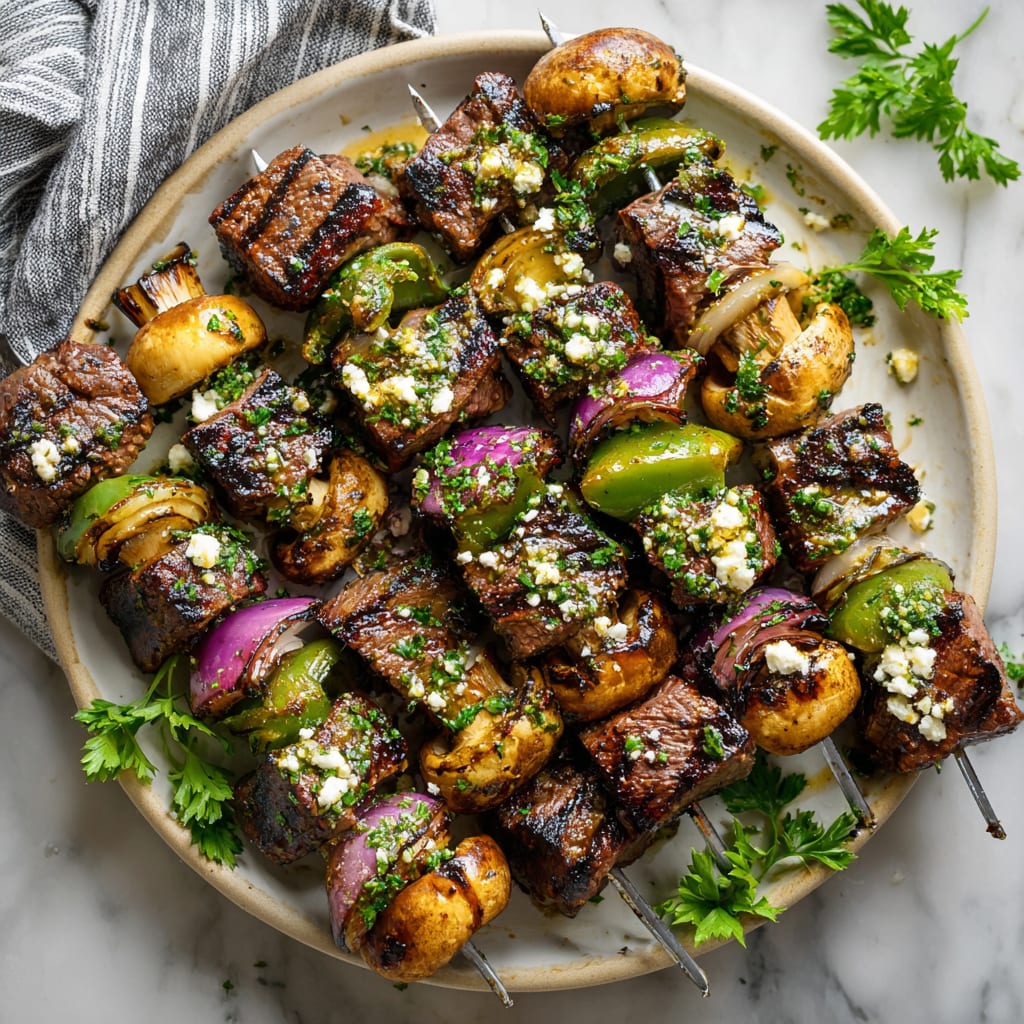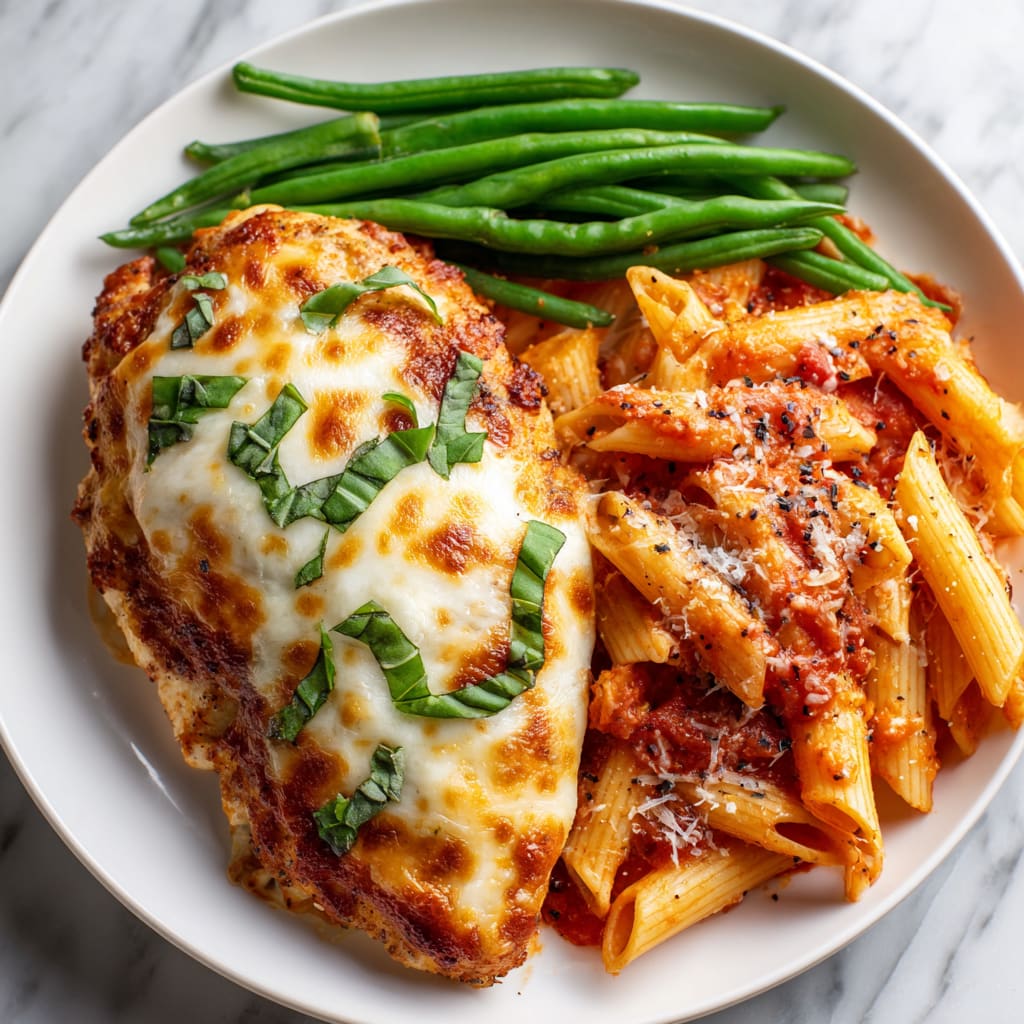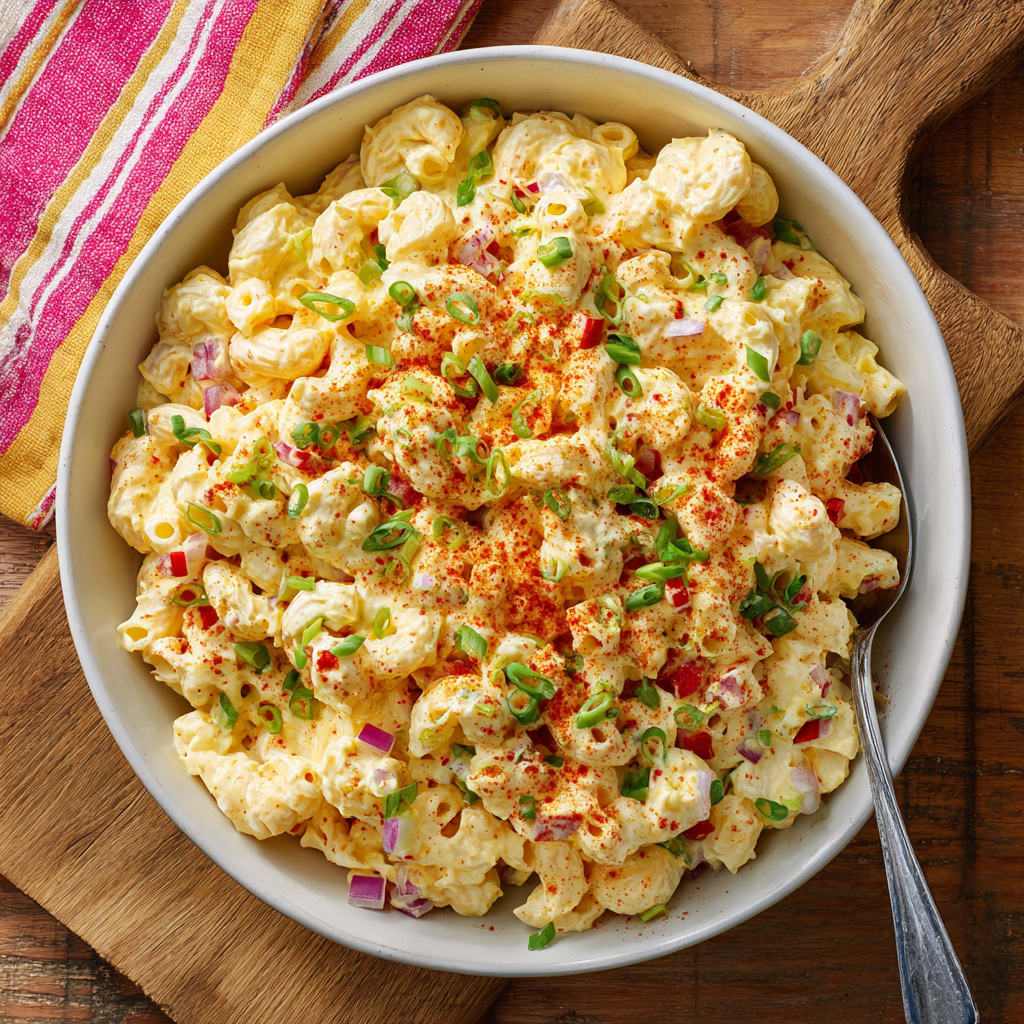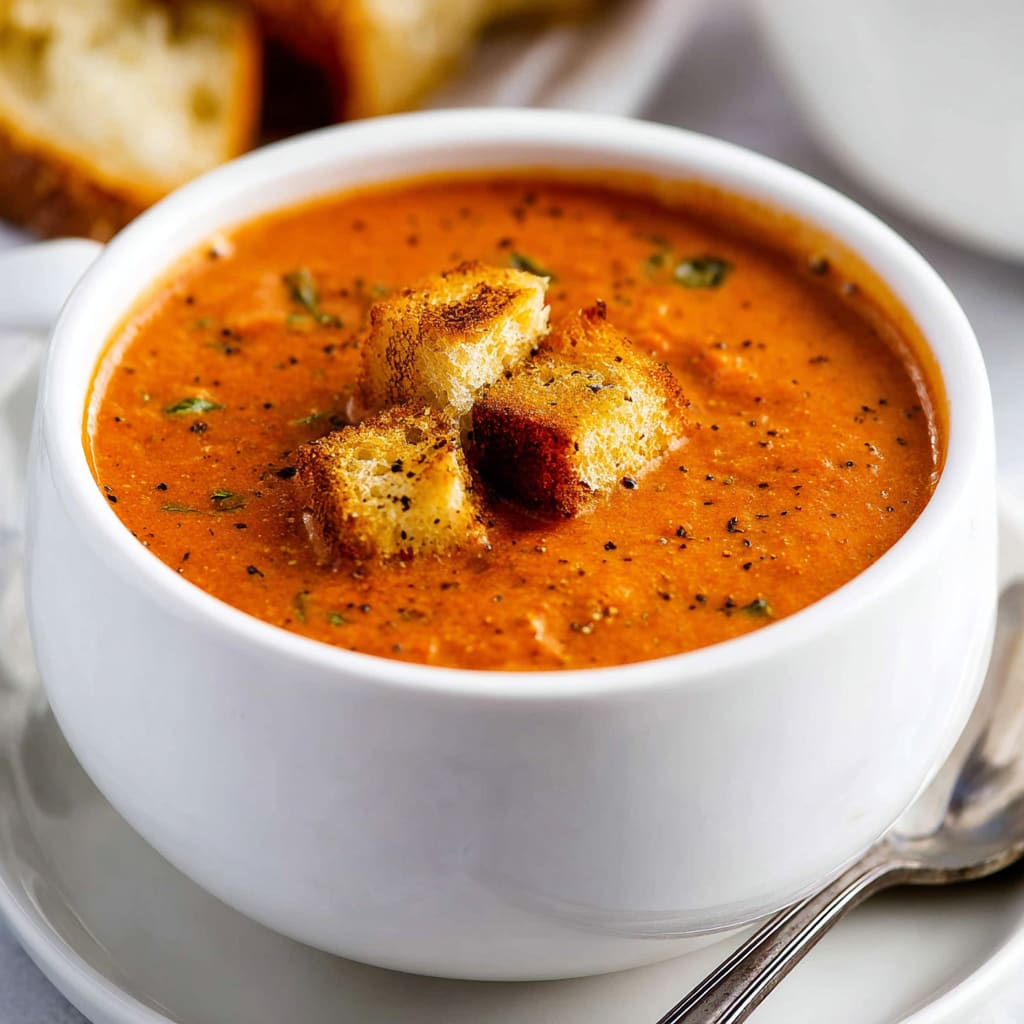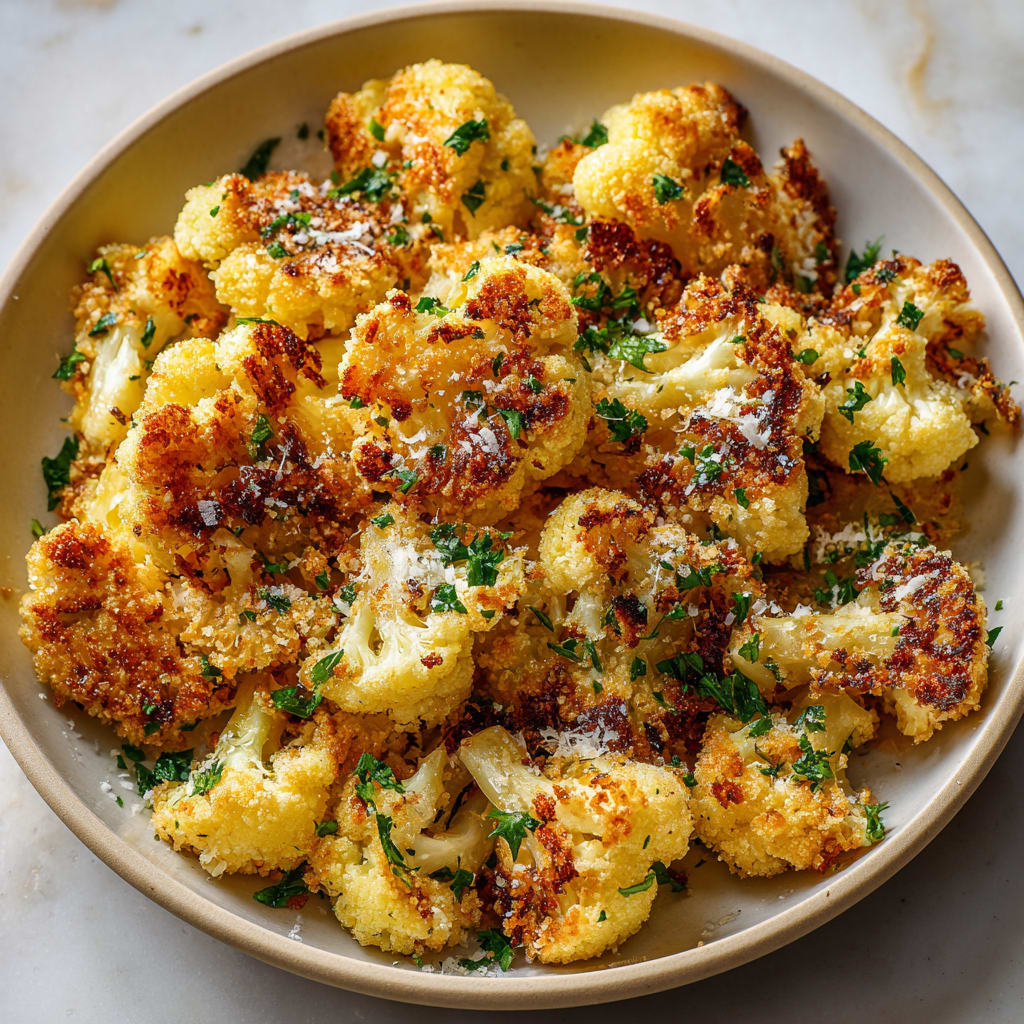Imagine biting into perfectly crispy strips of beef coated in a sauce that’s sweet, tangy, and carries just the right amount of heat. That’s Crispy Chilli Beef – a dish that transforms ordinary beef into an extraordinary culinary experience. This Chinese-inspired favorite balances addictive textures with bold flavors that keep you coming back for more. In this comprehensive guide, you’ll learn exactly how to create restaurant-quality Crispy Chilli Beef in your own kitchen, mastering the techniques that ensure perfect crispiness and balanced flavor every time.
Why You’ll Love This Recipe
This Crispy Chilli Beef recipe stands apart from others you might have tried before. The contrast between the shatteringly crisp exterior of the beef and the sticky, glossy sauce creates an irresistible textural experience that’s rarely achieved in home cooking. Unlike takeout versions that often arrive soggy, this method ensures the beef maintains its crunch even after being tossed in the sauce.
The flavor profile is carefully balanced – sweet notes from honey and brown sugar are countered by the acidity of rice vinegar and the umami depth of soy sauce. The chilli heat builds gradually rather than overwhelming your palate, allowing you to appreciate all the nuanced flavors.
What makes this recipe truly special is its accessibility. While it delivers impressive results, the techniques are straightforward enough for home cooks of any skill level. You’ll be amazed at how a handful of pantry staples can transform into something so extraordinary. The quick cooking time (less than 10 minutes of actual frying) makes this feasible for weeknight dinners, yet the impressive presentation makes it worthy of special occasions when you want to impress guests with your culinary prowess.
Recipe Details
Crispy Chilli Beef originated in Chinese-British cuisine, where it became a staple in Chinese restaurants throughout the UK before gaining popularity worldwide. Unlike traditional Chinese beef dishes that often focus on tenderness through slow cooking or velveting techniques, this dish celebrates contrasting textures through a special two-stage cooking process.
The culinary approach combines Western deep-frying techniques with Chinese flavor profiles. The beef is first coated in cornstarch (cornflour) which creates the signature crispy exterior when fried at high temperature. This method of coating and flash-frying was adapted from traditional Chinese techniques used for centuries to seal in moisture while creating textural contrast.
What distinguishes authentic Crispy Chilli Beef is the balance in the sauce. Traditional versions use a precise ratio of soy sauce, vinegar, and sweetener to create a glossy coating that adheres to the meat without making it soggy. The heat level has evolved over time – earlier versions were milder, while contemporary recipes like this one incorporate both fresh and dried chilies for a more complex heat profile.
The dish represents the beautiful fusion of culinary traditions, demonstrating how Chinese cooking techniques adapted to Western ingredients and preferences. While not considered traditional Chinese cuisine, it showcases the evolution of cultural food exchanges that have created some of the world’s most beloved dishes.
Nutritional Information
A typical serving of Crispy Chilli Beef (approximately 1 cup or 180g) contains around 380-420 calories, with the precise count varying based on the specific cut of beef used and frying technique. This dish provides approximately 25-30g of protein, making it an excellent source for this essential macronutrient.
The fat content averages 15-18g per serving, with approximately 4-5g being saturated fat. Using leaner cuts of beef like flank steak or sirloin reduces the fat content compared to fattier alternatives. The carbohydrate content is moderate at 30-35g per serving, with 20-25g coming from sugars in the sauce components.
From a micronutrient perspective, Crispy Chilli Beef offers several benefits. Beef is naturally rich in iron (approximately 3.5mg per serving), providing about 20% of daily requirements, with the heme iron form being particularly bioavailable. It also delivers significant B vitamins, especially B12 (2.5μg per serving) and niacin.
The dish contains approximately 850-950mg of sodium per serving, primarily from soy sauce. This represents about 40% of the recommended daily intake, making this a dish best enjoyed in moderation for those monitoring sodium consumption.
Red chilies contribute vitamin C (approximately 30mg) and capsaicin, which some research suggests may temporarily boost metabolism and provide anti-inflammatory benefits. The garlic and ginger both offer antioxidant compounds and immune-supporting properties.
For those looking to make this dish more nutritionally balanced, consider:
- Serving with brown rice instead of white for additional fiber
- Increasing the vegetable content by adding bell peppers, broccoli, or snow peas
- Using low-sodium soy sauce to reduce the overall salt content
- Adjusting the sugar content downward for fewer empty calories
Ingredients
For the Beef:
- 1 pound (450g) flank steak or sirloin, sliced against the grain into ¼-inch (0.6cm) strips
- 3 tablespoons (24g) cornstarch/cornflour
- 1 teaspoon (5g) fine sea salt
- ½ teaspoon (1g) white pepper
- Vegetable or canola oil for deep-frying (approximately 2 cups/480ml)
For the Sauce:
- 3 tablespoons (45ml) light soy sauce
- 2 tablespoons (30ml) rice vinegar
- 2 tablespoons (30g) honey
- 1 tablespoon (15g) brown sugar
- 1 tablespoon (15ml) sesame oil
- 2 teaspoons (10g) tomato paste
- 1 teaspoon (5g) cornstarch mixed with 1 tablespoon water (slurry)
For the Aromatics:
- 4 garlic cloves, finely minced (approximately 12g)
- 1-inch (2.5cm) piece fresh ginger, finely grated (approximately 10g)
- 3-4 red chilies, thinly sliced (adjust according to heat preference)
- 1 teaspoon (2g) dried chili flakes
- 3 green onions/scallions, white parts thinly sliced and green parts cut into 1-inch pieces
- ½ red bell pepper, julienned (approximately 75g)
The quality of your beef significantly impacts the final result. Flank steak provides the ideal balance of flavor and texture, though sirloin offers a slightly more tender alternative. Freezing the beef for 20-30 minutes before slicing makes it easier to achieve the characteristic thin strips.
When selecting chilies, Thai bird’s eye chilies deliver authentic heat, while larger red chilies provide a milder experience. For maximum flavor, use fresh ginger rather than pre-ground powder, and opt for rice vinegar over other varieties to achieve the distinctive tangy note that balances the sweetness.
Equipment Needed
Essential Equipment:
- Wok or Deep Frying Pan: A 12-14 inch (30-35cm) carbon steel wok is ideal for both deep-frying the beef and creating the sauce. The rounded bottom allows for quick temperature changes and efficient tossing. If unavailable, a deep, heavy-bottomed frying pan at least 10 inches (25cm) in diameter will suffice, though you’ll sacrifice some heat distribution efficiency.
- Cooking Thermometer: An instant-read or candy thermometer that measures up to 400°F (200°C) ensures your oil reaches the optimal frying temperature of 350-375°F (175-190°C). Without precise temperature control, your beef may absorb too much oil (temperature too low) or burn on the outside while remaining undercooked inside (temperature too high).
- Spider Strainer or Slotted Spoon: Essential for safely removing the fried beef from hot oil while allowing excess oil to drain back into the wok. A bamboo spider strainer works particularly well due to its heat resistance and wide surface area.
- Metal Tongs: Necessary for safely manipulating the beef strips when coating them and arranging in the hot oil.
Additional Helpful Tools:
- Fine Mesh Strainer: Useful for straining the oil after frying for potential reuse.
- Mixing Bowls: A set of at least three different sized bowls for marinating the beef, mixing the sauce ingredients, and holding the fried beef.
- Paper Towel-Lined Plate: For draining excess oil from the fried beef.
- Sharp Chef’s Knife: Crucial for achieving the thin, even beef strips that cook uniformly.
- Cutting Board with Juice Groove: Helps contain any juices from the beef during slicing.
- Small Whisk: For thoroughly combining the sauce ingredients and cornstarch slurry.
While specialized equipment like a wok enhances the authentic preparation, this recipe can be successfully adapted to standard kitchen equipment. If using a conventional stovetop rather than a high-BTU wok burner, you may need to adjust cooking times slightly to account for the temperature differences.
Pro Tips For Success
Achieving restaurant-quality Crispy Chilli Beef hinges on several critical techniques that professional chefs have mastered. First, the beef must be sliced correctly – always cut against the grain in thin, uniform strips (approximately ¼-inch/0.6cm thick). This orientation severs the muscle fibers, resulting in more tender bites. For easier slicing, place your beef in the freezer for 20-30 minutes until it’s firm but not frozen solid.
The cornstarch coating requires special attention. For maximum crispiness, thoroughly pat the beef dry with paper towels before coating – excess moisture creates steam during frying, compromising the crisp texture. Allow the coated beef to rest for 5-10 minutes before frying, which helps the cornstarch adhere more effectively. For an even crispier result, consider double-coating: dip the beef in a beaten egg white before the cornstarch application.
Oil temperature control is perhaps the most crucial element. Use a cooking thermometer to maintain 350-375°F (175-190°C) throughout the frying process. Too cool, and the beef absorbs excess oil; too hot, and it burns before cooking through. Fry in small batches – overcrowding the pan drops the oil temperature dramatically. Each batch should take only 2-3 minutes to develop a golden crust while maintaining a slightly pink center, ensuring tenderness.
When preparing the sauce, combine all liquid ingredients before adding to the pan to ensure even incorporation. The cornstarch slurry should always be re-stirred immediately before adding to the sauce, as separation occurs quickly. Add it gradually while stirring continuously to prevent lumping.
Timing is everything when combining components. The sauce should be reduced to a glossy consistency that coats the back of a spoon before reintroducing the beef. Once combined, toss quickly and serve immediately – every minute the beef sits in the sauce reduces its crispiness.
For advanced flavor development, toast your dried chili flakes in the oil for 30 seconds before adding other aromatics. This blooms their flavor compounds, creating deeper complexity in the final dish. Similarly, allowing your minced garlic and ginger to rest together for 10 minutes before cooking activates alliinase enzymes that enhance their flavor profiles.
Instructions
Preparing the Beef:
- Begin by slicing your flank steak against the grain into thin strips approximately ¼-inch (0.6cm) thick and 2-3 inches (5-7.5cm) long. Working against the grain is crucial as it shortens the muscle fibers, resulting in more tender beef. You’ll notice the grain appears as parallel lines running along the meat – cut perpendicular to these lines.
- Place the sliced beef in a medium bowl and pat thoroughly dry with paper towels. Excess moisture will prevent proper crisping during frying.
- In a separate bowl, combine the cornstarch, salt, and white pepper. Mix well to distribute the seasonings evenly throughout the cornstarch.
- Add the dried cornstarch mixture to the beef strips and toss thoroughly with your hands or tongs until each piece is evenly coated with a thin, dry layer. The coating should feel powdery rather than wet or gummy.
- Allow the coated beef to rest for 5-10 minutes while you prepare the sauce and aromatics. This resting period helps the cornstarch adhere better to the meat.
Preparing the Sauce:
- In a small bowl, whisk together the soy sauce, rice vinegar, honey, brown sugar, sesame oil, and tomato paste until fully combined and the sugar has dissolved. In a separate small bowl, create a cornstarch slurry by mixing 1 teaspoon cornstarch with 1 tablespoon water until smooth. Set both mixtures aside.
Frying the Beef:
- Heat the oil in your wok or deep frying pan to 350-375°F (175-190°C). You’ll need enough oil to submerge the beef strips, approximately 2 inches deep. Test the oil temperature by dropping in a small piece of beef – it should sizzle immediately and rise to the surface.
- Working in small batches of about one-third of the beef at a time, carefully add the coated strips to the hot oil, separating them with tongs to prevent sticking. Fry for 2-3 minutes until golden brown and crispy, stirring occasionally with your spider strainer to ensure even cooking.
- Once crisp, transfer the fried beef to a paper towel-lined plate to drain excess oil. Repeat with remaining batches, allowing the oil to return to temperature between each batch.
Creating the Final Dish:
- Carefully pour out all but 2 tablespoons of the frying oil from your wok, leaving any browned bits which add flavor. Return the wok to medium-high heat.
- Add the minced garlic, grated ginger, and dried chili flakes to the hot oil. Stir-fry for 30 seconds until fragrant but not browned. The aromatics should sizzle upon contact with the oil, releasing their essential oils.
- Add the fresh sliced chilies, white parts of green onions, and red bell pepper. Stir-fry for an additional 1-2 minutes until slightly softened but still crisp.
- Pour in the prepared sauce mixture and bring to a simmer. Cook for 1 minute until it begins to thicken slightly and becomes glossy.
- Re-stir your cornstarch slurry (it separates quickly) and drizzle it into the simmering sauce while stirring constantly. Continue cooking for 30-60 seconds until the sauce thickens enough to coat the back of a spoon.
- Return the fried beef to the wok and quickly toss to coat evenly with the sauce. Add the green parts of the scallions and toss for just 30 seconds – any longer will compromise the beef’s crispiness.
- Transfer immediately to a serving plate, ensuring you scrape all the sauce from the wok. The dish should be served right away while the beef maintains its signature crispy texture.
Recipe Variations
Regional Adaptations
For a Sichuan-inspired version, incorporate 1 tablespoon of Sichuan peppercorns (toasted and ground) into the cornstarch coating. These peppercorns create the characteristic numbing sensation (málà) that pairs beautifully with the chili heat. Additionally, substitute half the regular soy sauce with Sichuan pixian doubanjiang (fermented broad bean paste) for deeper complexity.
A Korean-influenced variation transforms this dish by replacing the soy sauce with gochujang (Korean chili paste) and adding 1 tablespoon of honey for balance. Finish with a sprinkle of toasted sesame seeds and serve with kimchi on the side for an authentic Korean touch.
Dietary Modifications
For a gluten-free adaptation, substitute regular soy sauce with tamari and verify that your cornstarch is processed in a gluten-free facility. The remaining ingredients are naturally gluten-free, making this an easy conversion without compromising flavor.
Create a lower-carb version by replacing the cornstarch coating with a mixture of almond flour and unflavored protein powder (3:1 ratio). Reduce the honey and brown sugar quantities by half and thicken the sauce with xanthan gum (¼ teaspoon) instead of cornstarch. This modification significantly reduces the carbohydrate content while maintaining textural interest.
Flavor Twists
An orange-infused variation introduces bright citrus notes by adding the zest and juice of one orange to the sauce. Reduce the rice vinegar slightly to maintain the acid balance. This creates a dish reminiscent of orange beef but with the signature crispiness intact.
For a tropical twist, incorporate 2 tablespoons of finely diced pineapple and 1 tablespoon of pineapple juice into the sauce. The natural enzymes in pineapple offer tenderizing properties while complementing the sweet-spicy profile of the original recipe.
A black pepper version shifts the heat profile by reducing the chilies and adding 1-2 teaspoons of freshly cracked black pepper to both the coating and the sauce. This variation highlights the beef’s natural flavors while still providing warming heat.
Each variation maintains the essential characteristics of Crispy Chilli Beef – the textural contrast between crispy beef and glossy sauce – while offering new flavor dimensions to explore based on your preferences or available ingredients.
Storage & Serving Suggestions
Optimal Storage Practices
While Crispy Chilli Beef is undoubtedly best enjoyed immediately after preparation, leftovers can be stored with careful attention to maintaining texture. Refrigerate any remaining beef within two hours of cooking in an airtight container, separating the beef from any extra sauce if possible. Properly stored, it will maintain food safety for 3-4 days in the refrigerator.
For reheating, avoid microwave methods which will render the beef soggy. Instead, preheat your oven to 350°F (175°C) and spread the beef in a single layer on a baking sheet. Reheat for 5-7 minutes until just warmed through. This method helps restore some crispness to the exterior. If you’ve stored the sauce separately, gently reheat it in a small saucepan and toss with the beef just before serving.
Freezing is not recommended as the texture of the beef deteriorates significantly upon thawing and reheating.
Ideal Serving Presentations
Traditionally, Crispy Chilli Beef is served over steamed jasmine rice, which provides a neutral canvas for the bold flavors while absorbing the delicious sauce. For an authentic Chinese restaurant presentation, pack the rice into a small bowl and invert onto the plate before arranging the beef alongside.
For a more elaborate meal, serve as part of a multi-dish spread alongside vegetable-forward dishes like stir-fried bok choy with garlic, steamed broccoli with oyster sauce, or a simple cucumber salad dressed with rice vinegar and sesame oil. The fresh vegetables provide textural contrast and help balance the richness of the beef.
Complementary Accompaniments
Enhance your Crispy Chilli Beef experience with these accompaniments:
- A small bowl of Chinese black vinegar for dipping provides acidic contrast
- Steamed mantou buns to soak up the sauce and create impromptu “sliders”
- Chilled cucumber spears sprinkled with sesame seeds offer refreshing crunch
- Cold Tsingtao beer or hot jasmine tea both complement the spice profile beautifully
- For wine pairings, an off-dry Riesling or Gewürztraminer stands up to the sweet-spicy flavors
For an impressive dinner party presentation, serve family-style on a large platter garnished with additional thinly sliced fresh chilies, lime wedges, and sprigs of fresh cilantro, allowing guests to adjust heat and acidity to their preference.
FAQs
What cut of beef works best for Crispy Chilli Beef?
Flank steak is the ideal cut for this dish due to its strong beef flavor and firm texture that crisps beautifully when fried. Sirloin is an excellent alternative if flank isn’t available. Avoid cuts like tenderloin or ribeye – while tender, their higher fat content and softer texture don’t achieve the characteristic crispiness. Always slice against the grain (perpendicular to the visible muscle fibers) to ensure tenderness despite the quick cooking method.
Why isn’t my beef getting crispy?
Several factors can prevent achieving maximum crispiness. First, check that your beef is thoroughly dry before coating – excess moisture creates steam during frying. Second, ensure your oil temperature remains between 350-375°F (175-190°C) throughout frying. Third, avoid overcrowding the pan, which drops the oil temperature dramatically. Finally, make sure you’re using cornstarch (cornflour) rather than all-purpose flour, as cornstarch creates a significantly crispier texture.
Can I make this dish less spicy while maintaining authentic flavor?
Absolutely. The heat level is easily adjustable without compromising authenticity. Reduce or eliminate the dried chili flakes and use milder fresh chilies like red bell peppers instead of bird’s eye chilies. Alternatively, remove the seeds and membranes from the chilies, where most of the capsaicin (heat compound) resides. The dish’s identity comes more from the sweet-sour sauce balance and the crispy texture than from specific heat levels.
What’s the best way to prepare this for a dinner party?
You can prepare components ahead: slice and coat the beef up to 4 hours in advance (store covered in the refrigerator), pre-mix sauce ingredients, and prepare aromatics. When guests arrive, fry the beef just before serving. For maximum efficiency, fry all beef batches consecutively, then quickly finish the dish with aromatics and sauce just before serving. This approach minimizes last-minute preparation while ensuring optimal texture.
Why does restaurant Crispy Chilli Beef taste different from homemade versions?
Professional kitchens often use specialized equipment like high-BTU wok burners that reach significantly higher temperatures than home stoves. They may also employ double-frying techniques, frying the beef once at a lower temperature, resting it, then frying again at a higher temperature. Additionally, restaurants frequently add MSG (monosodium glutamate) to enhance umami flavors. You can approximate these elements by using a cornstarch-twice coating method and adding ½ teaspoon of MSG or 1 tablespoon of mushroom powder to your sauce.
Can I air-fry the beef instead of deep-frying?
While not traditional, air-frying can produce acceptable results with significantly less oil. Preheat your air fryer to 400°F (200°C), spray the coated beef strips with cooking oil, and cook in a single layer for 7-8 minutes, turning halfway through. The texture won’t be identical to deep-fried versions, but it creates a satisfactory alternative for health-conscious cooks. You’ll achieve better results with an air fryer that doesn’t require preheating.
What can I substitute for rice vinegar if I don’t have any?
Apple cider vinegar makes the best substitute when mixed in a 3:1 ratio with a small amount of sugar to mimic rice vinegar’s mild sweetness. White wine vinegar is another good option using the same ratio. Regular distilled white vinegar is too harsh and should be avoided unless diluted with water and sweetened slightly.
Conclusion
Mastering Crispy Chilli Beef at home represents a culinary triumph that bridges restaurant-quality Chinese cuisine with accessible home cooking. The magic lies in the contrasts: the shatteringly crisp exterior giving way to tender beef within, and the perfect balance of sweet, tangy, umami, and spicy notes dancing across your palate with each bite.
What begins as simple beef strips transforms through careful technique into something extraordinary – a dish that demonstrates how attention to detail elevates everyday ingredients into memorable meals. The skills you’ve developed through this recipe – from proper slicing techniques to temperature control and sauce reduction – transfer beautifully to countless other culinary creations.
Don’t be surprised when this becomes a requested favorite among friends and family. There’s something deeply satisfying about recreating a takeout classic that not only rivals the restaurant version but potentially surpasses it with its freshness and customization to your exact preferences.
So heat that oil, slice that beef, and embrace the sizzle – your kitchen is about to transform into the best Chinese restaurant in town, with you as the head chef. The journey from basic ingredients to spectacular Crispy Chilli Beef is just the beginning of your exploration into the fascinating world of Chinese-inspired cooking.
Print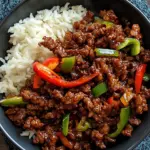
Crispy Chilli Beef Recipe
Description
Master authentic Crispy Chilli Beef with our foolproof recipe – crispy beef strips in sweet-spicy sauce that rivals your favorite takeout!
Ingredients
- 1 pound (450g) flank steak or sirloin, sliced against the grain into ¼-inch strips
- 3 tablespoons (24g) cornstarch/cornflour
- 1 teaspoon (5g) fine sea salt
- ½ teaspoon (1g) white pepper
- Vegetable or canola oil for deep-frying (approximately 2 cups)
- 3 tablespoons (45ml) light soy sauce
- 2 tablespoons (30ml) rice vinegar
- 2 tablespoons (30g) honey
- 1 tablespoon (15g) brown sugar
- 1 tablespoon (15ml) sesame oil
- 2 teaspoons (10g) tomato paste
- 1 teaspoon (5g) cornstarch mixed with 1 tablespoon water (slurry)
- 4 garlic cloves, finely minced (approximately 12g)
- 1-inch (2.5cm) piece fresh ginger, finely grated (approximately 10g)
- 3–4 red chilies, thinly sliced (adjust according to heat preference)
- 1 teaspoon (2g) dried chili flakes
- 3 green onions/scallions, white parts thinly sliced and green parts cut into 1-inch pieces
- ½ red bell pepper, julienned (approximately 75g)
Instructions
- Slice flank steak against the grain into thin strips approximately ¼-inch thick and 2-3 inches long.
- Pat beef thoroughly dry with paper towels.
- Mix cornstarch, salt, and white pepper in a bowl, then coat beef strips evenly.
- Let coated beef rest for 5-10 minutes.
- Prepare sauce by whisking together soy sauce, rice vinegar, honey, brown sugar, sesame oil, and tomato paste. Make cornstarch slurry separately.
- Heat oil to 350-375°F (175-190°C) in a wok or deep frying pan.
- Fry beef in small batches for 2-3 minutes until golden brown and crispy.
- Transfer fried beef to paper towel-lined plate to drain.
- Pour out all but 2 tablespoons of oil from wok, return to medium-high heat.
- Stir-fry garlic, ginger, and dried chili flakes for 30 seconds.
- Add fresh chilies, white parts of green onions, and red bell pepper. Stir-fry for 1-2 minutes.
- Pour in sauce mixture and simmer for 1 minute until it begins to thicken.
- Add cornstarch slurry while stirring constantly. Cook 30-60 seconds until sauce thickens.
- Return fried beef to wok and toss to coat with sauce.
- Add green parts of scallions and toss for 30 seconds.
- Serve immediately for maximum crispiness.



